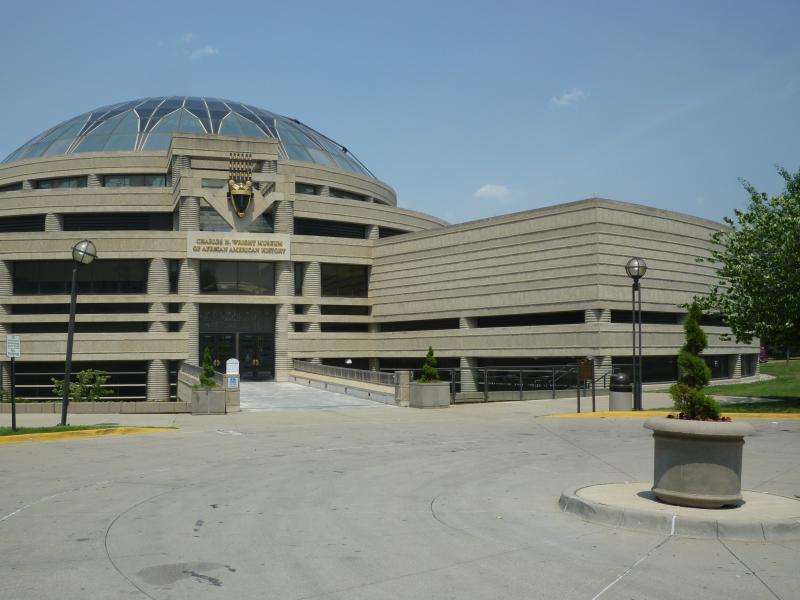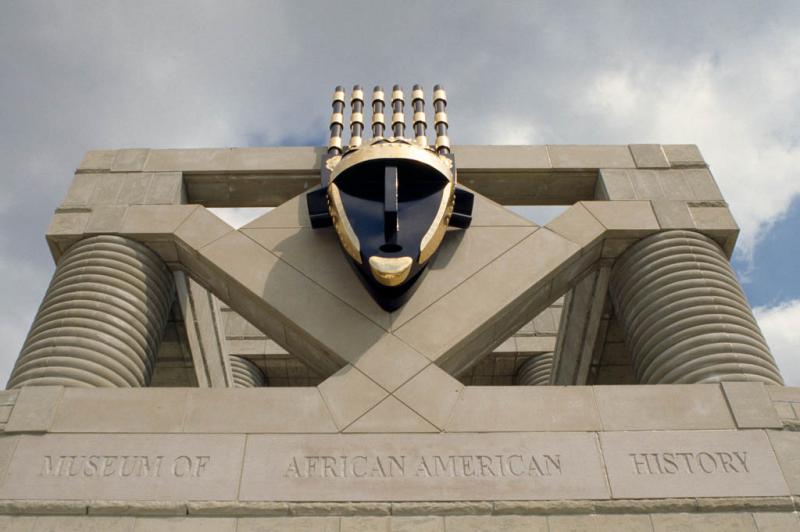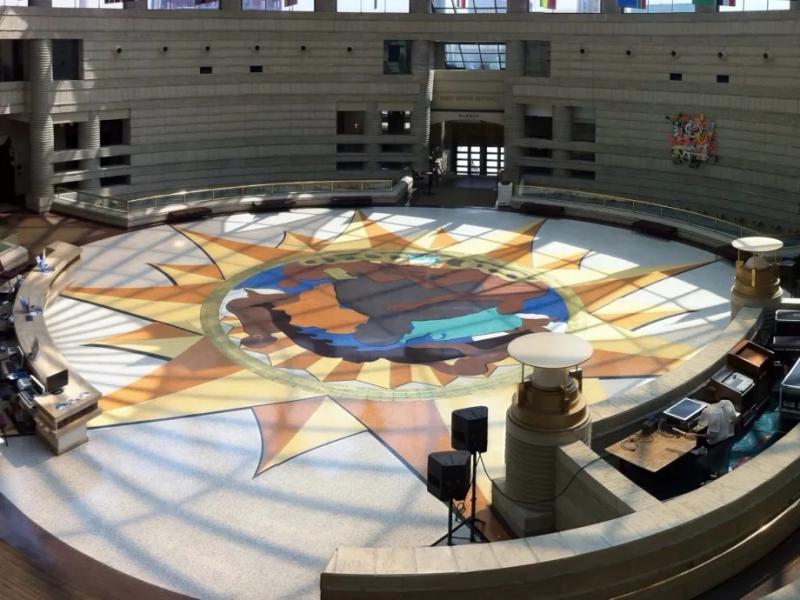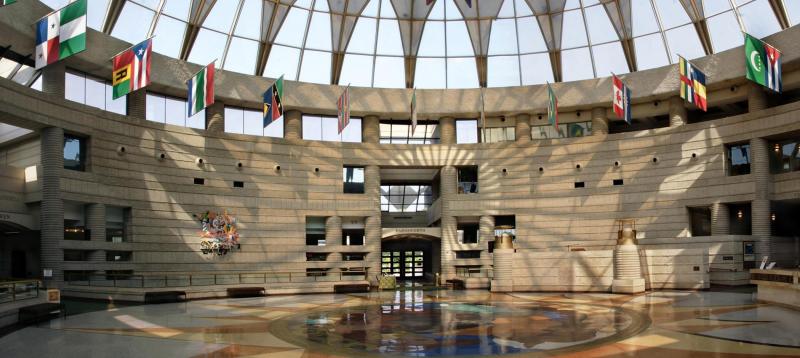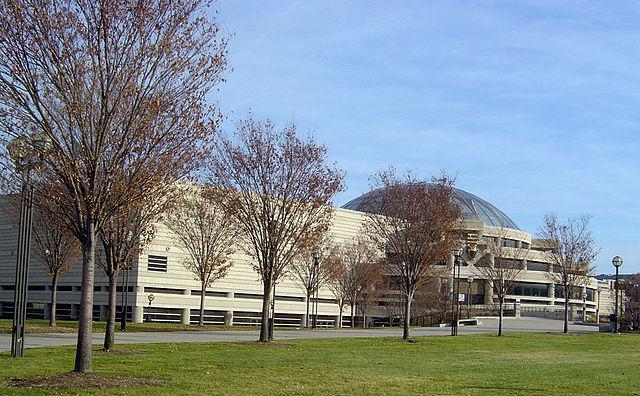-
Name of property current (historical)
-
Charles H. Wright Museum of African American History
-
Entry author
-
Yingyao Lu
-
Abstract
-
Charles H. Wright Museum of African American History is a museum located in Detroit, Michigan. The museum was founded by Dr. Charles H. Wright, an African American physician, and philanthropist who was passionate about preserving African American history and culture.
The museum features a modernist design that incorporates elements of African architecture. The design characteristics reflect both the culture of the African-American and the culture of the Black community in Detroit.
The museum sees itself as a community-oriented institution and has made a concerted effort to involve the local community in all aspects of its programming and operation. It has also made a commitment to supporting local artists and businesses, and to using its resources to benefit the broader community. With the support of donors, volunteers, and community member, the management and operation of the museum is better maintained.
-
Address
-
315 E. Warren Ave, Detroit, Michigan
-
Architect
-
SDG Associates
-
Date (comission)
-
Mid-twentieth century - Charles H. Wright felt inspired to create a repository for African-American history after visiting Denmark, where he saw a memorial to Danish World War II veterans.
1965 - With the support of racially-integrated members of the Detroit community, Wright established the city’s first International African-American Museum (IAM).
-
Date (completion)
-
1966 - The museum opened on January 30 at 1549 West Grand Boulevard(a house that Wright privately owned).
-
Program/ function
-
History museum - Collections of African-American history, art and music
-
Contractor
-
Turner Construction
-
Date (modification, adaptation, renovation)
-
1978 - the city of Detroit leased the museum a plot of land in Midtown
1985 - the museum’s name was changed to the Museum of African American History
1987 - the new Museum of African American History reopened
1992 - the City of Detroit sold construction bonds in order to finance construction of a new museum
1997 - the new museum opened
1998 - the name of the Museum of African American History was renamed the “Charles H. Wright Museum of African American History”
-
Style/ distinct features/ cultural reference
-
The museum features a modernist design that incorporates elements of African architecture. The building's exterior is clad in precast concrete panels that are etched with African symbols and motifs, reflecting the cultural heritage of the museum's subject matter.
-
Gift giver/ funder/ contributor
-
Charles H. Wright was a Detroit physician and founder of the museum.
-
Beneficiaries and impact on the community
-
Wright established the museum to inspire them to take pride in their heritage and history. The museum's primary beneficiaries are those who visit the museum to learn about African American history and culture. The museum's exhibits and programs provide visitors with a deeper understanding of the contributions and experiences of African Americans throughout history, and promote a greater appreciation for the diversity and richness of African American culture.
The museum has become a cultural landmark, and serves as a hub for cultural events and activities in the city. Each year, more than half a million people visit The Wright to engage with its unparalleled collection. Among those hundreds of thousands of men, women and children are many residents of Detroit itself. The museum's educational programs and outreach efforts also benefit local schools and community organizations, and help to promote a greater understanding of African American history and culture in the region.
-
Was it part of a network of buildings?
-
No. It's a standalone museum.
-
Size/ scale
-
The museum boasts 125,000 square feet of space and was constructed for $38.4 million.
-
Was the community involved in the process?
-
The museum's construction was made possible in part by the support of the local community, who helped to raise funds for the project. Community members and organizations contributed money and resources to the museum's construction and operation, including donations of artifacts, photographs, and documents for the museum's exhibits.
-
Q1: What were the motivations of the gift-giver and the implications of the gift for the community ?
-
Wright's motivation to build the museum stemmed from his deep commitment to preserving and promoting African American history and culture.
A lifelong member of the NAACP, Dr. Wright was acutely aware of the ways in which African American history and culture were often marginalized or excluded from mainstream cultural institutions. He saw the need for a museum that would provide a space for African American history and culture to be preserved and shared with the broader community.
In addition to his commitment to African American culture, Wright was also motivated by a desire to give back to the community that had shaped him. He saw the museum as a way to provide educational and cultural opportunities for the young African Americans of Detroit, and to be made aware of and take pride in the history of their forebears and their remarkable struggle for freedom.
-
Q2: Was there an imposed sense of responsibility or reciprocation in the case study, and who were the parties that were charged with these actions?
-
The responsibility involves maintaining and preserving the museum's collection, exhibits, and physical space for the benefit of present and future generations. The Wright Museum expects people to have a strong sense of mission to promote African and African-American culture and history. That's why the museum has the slogan "This isn't my museum, this is OUR museum" to encourage the community to join the volunteers. Volunteers are an integral part of the Wright Museum's team that is responsible for accomplishing the Museum's Mission and providing quality customer service to visitors.
The museum relies on the support of donors, volunteers, and community members to fulfill its responsibilities and commitments. The museum's donor base includes individuals, corporations, and foundations who are committed to promoting African American history and culture. The donation supports The Wright's outstanding Public Programs department, responsible for curating dynamic activities and events for audiences of all ages, from lectures to film screenings, musical performances, and beyond.
Volunteers and community members play a critical role in supporting the museum's operations and helping to ensure its ongoing success.
-
Q3: Do the design characteristics (i.e material, layout, location) reflect either the culture of the giver, the culture of the receiver, or a mixture of both?
-
The design characteristics of the Charles H. Wright Museum of African American History reflect a mixture of both the culture of the giver and the culture of the receiver.
Since it was founded by an African American physician passionate about preserving African American history and culture, the museum expresses Wright’s motivation and culture in form, theme, and details. The dome above a rotunda is based on African buildings, and the sculptural columns mimic a traditional African rope motif. The brass, bronze, mahogany, and marble materials are native to Africa.
At the same time, the museum's design also reflects the culture of the receiver, in the sense that it was designed to reflect the unique cultural and historical context of its location in Detroit. Detroit was a major center of the Great Migration, a period in the early 20th century when millions of African Americans moved from the South to Northern cities in search of better economic opportunities and to escape racial discrimination.
-
Bibliography
-
KAROUSOS, MANOS. “Charles H. Wright (1918-2002) •.” BLACKPAST, February 8, 2023. https://www.blackpast.org/african-american-history/charles-h-wright-1918-2002/.
Brame, Karen D. “Charles H. Wright Museum of African American History.” BlacklistedCulture.com, June 15, 2020. https://blacklistedculture.com/charles-h-wright-museum-of-african-american-history/#:~:text=I%20was%20committed%20to%20what.
Charles H. Wright Museum of African American History. “The Charles H. Wright Museum of African American History.” www.thewright.org, n.d. https://www.thewright.org/.
Detroit Historical Museum. “Wright, Charles H. | Detroit Historical Society.” detroithistorical.org. Accessed April 25, 2023. https://detroithistorical.org/learn/encyclopedia-of-detroit/wright-charles-h#:~:text=Charles%20Howard%20Wright%20was%20an.
Eckert, Kathryn Bishop. “Charles H. Wright Museum of African American History.” SAH ARCHIPEDIA, July 17, 2018. https://sah-archipedia.org/buildings/MI-01-WN66.
